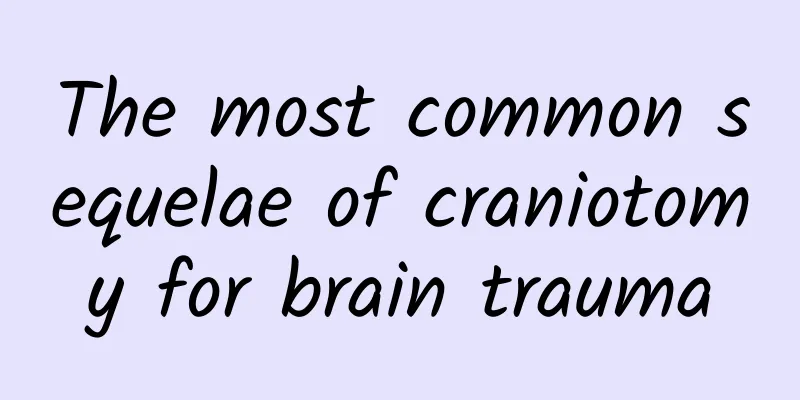The most common sequelae of craniotomy for brain trauma

|
Severe brain trauma requires craniotomy, a common example being brain trauma caused by car accidents. There will be some sequelae after craniotomy for brain trauma, epilepsy is the most common, as well as inability to speak, increasingly irritable temper, and prone to depression. 1. Sequelae of craniotomy for brain trauma 1. Epilepsy: Epileptic seizures are caused by abnormal discharges of brain neurons. 2. Aphasia: Aphasia refers to the loss of language comprehension and expression ability due to damage to the language center of the cerebral cortex. 3. Apraxia: Apraxia refers to the inability to complete directed, purposeful and continuous movements. 4. Patients with sequelae of brain trauma may also experience adverse reactions such as emotional instability, fatigue, insomnia, lack of concentration, memory loss, and even moodiness and irritability. 2. Nursing after craniotomy for brain trauma 1. If a high fever occurs suddenly, contact a doctor and cool down physically, such as rubbing the body with warm water frequently. 2. The nasogastric tube should be flushed after use and replaced regularly 3. Encourage patients to cough effectively to cough up deep sputum. If nebulization is possible, try to do it. 4. Turn over more frequently to prevent bedsores 5. In terms of diet, follow the doctor's instructions and give the patient a corresponding liquid diet 6. Avoid constipation. If constipation occurs, take relevant measures in terms of diet and medication. 7. For oral care, you can wipe the inside of your mouth with a cotton ball dipped in saline solution every day. 8. Protect the endotracheal tube to prevent it from falling off. Change the gauze every day as much as possible. Make sure it is of appropriate tightness. Observe whether there is any skin damage in the place where the gauze is pressed. If damage occurs, take corresponding measures. 9. Actively observe the patient's condition, including the color of sputum, etc. If there are any special changes, notify the doctor as soon as possible 10. Keep the patient in a semi-sitting position to help breathing and prevent the spread of inflammation 11. Provide psychological care, encourage and support patients, and enhance their confidence in recovering their health. Finally, I wish your father a speedy recovery from his illness. . . |
<<: What is pulmonary hypertension? Do you understand it after this introduction?
>>: What are the sequelae of brain trauma? Dizziness and headache are the most common
Recommend
Hemp Seed Dosage
After thousands of years of spread of traditional...
Can I apply heat to my stomach during menstruation?
It is common for women to feel back pain during m...
What is a rash?
Rash is a skin lesion in medicine. Many diseases ...
How to treat pityriasis versicolor
The so-called tinea versicolor is clinically call...
Pain on one side of waist
Lumbar spondylosis, like cervical spondylosis, ha...
Can wormwood and ginger water cure vulvar itching?
Vulvar itching is a common gynecological symptom....
What to do if the baby's umbilical cord does not fall off
Umbilical cord care after birth is very important...
What should I do if hemorrhoids get worse after moxibustion?
Although hemorrhoids are not a life-threatening d...
What is peripheral neuritis?
Many people don't know much about peripheral ...
Why do my knees feel numb?
Many elderly people always feel soreness in their...
Dosage of Uncaria rhynchophylla
Uncaria rhynchophylla is a common Chinese medicin...
Hypothyroidism
Everyone wants to have a healthy body, but there ...
What happens if the coccyx is broken?
The coccyx is at the very end of the spine, and i...
What should I pay attention to during IVF?
For infertile female friends who want to undergo ...
How to quickly reduce swelling of stye
Some patients will suddenly find their eyes red a...









